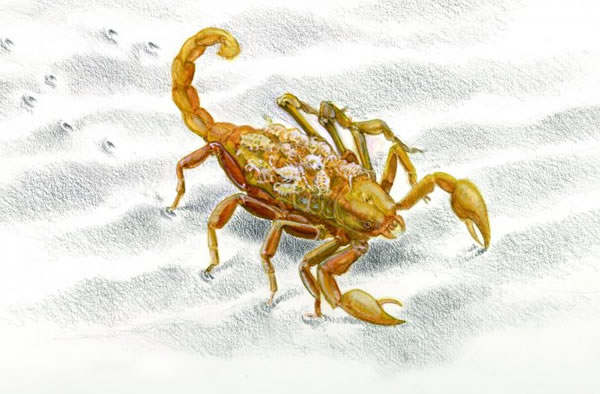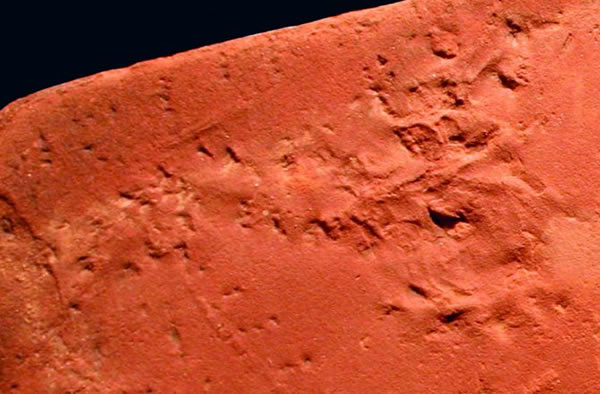Shush! World's Oldest Resting Scorpion
This is a drawing of the scorpion who left behind the only fossil body ever found.
It may not look like much, but together with other tracks in the 280 million-year-old rocks of Prehistoric Trackways National Monument in southern New Mexico, this vague form has been identified as the one and only fossil impression of a scorpion body ever found. The scorpion rested here for a time, then scurried off, and the imprint of its body eventually turned to stone.
The age of the trace fossil, as body impressions and tracks are called, takes scorpions way back to the early Permian. That confirms that scorpions have survived a lot of gigantic mass extinction events between then and now. What’s more, seeing how the carbon dioxide levels in the Permian atmosphere were probably three times what they are today on Earth, it’s not likely anthropogenic climate change will stop these hardy arthropods either.
“We gave it the name Alacranichnus, which means scorpion trace (alacran is Spanish for scorpion and ichnos is Greek for trace),” said Spencer Lucas, curator at the New Mexico Museum of Natural History and Science (NMMNHS). The discovery was just published in the journal Ichnos: An International Journal for Plant and Animal Traces by scientist at the museum in Albuquerque.
The scorpion fossil
Mary Sundstrom
In the paper Lucas, Allan Lerner and Sebastian Voigt describe the trace fossil as a “substantial addition to the poorly known Permian fossil record of scorpions that demonstrates that scorpions were present in the Early Permian coastal plain…. Unfortunately, there is nothing in the way of morphological characters evident from the resting trace that can help determine which particular type of scorpion made it.”
Scorpions are the oldest known arachnids, the researchers explain, with some fossils of probably aquatic scorpions dating back to the Silurian Periods about 430 million years ago. Later, in the Carboniferous (359 million to 299 million years ago), scorpions took to land. But then the fossils peter out.
“There is an extremely large gap in the North American scorpion fossil record following the Upper Carboniferous,” write Lucas and his colleagues. In fact, Permian scorpion fossils are rare worldwide, and only found in bits and pieces. There are no more North American scorpion fossils until the Middle Eocene (about 45 million years ago).
The unique new fossil will be displayed in the New Mexico museum’s upcoming Paleozoic Hall.
Top Image: Photo of the rock with the imprint of what is believed to be a scorpion. Credit: New Mexico Museum of Natural History(Nov 27, 2013 06:23 AM ET // by Larry O'Hanlon)













